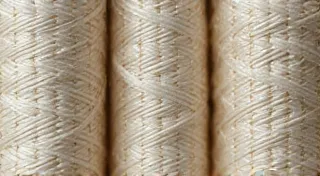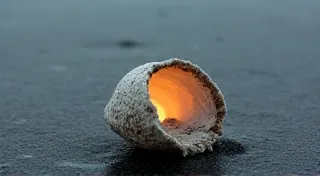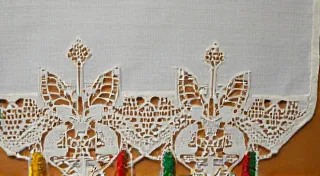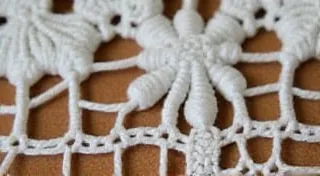Fractured Symmetry: The Unexpected Geometry of Bobbin Lace Collecting
There’s a quiet beauty in imperfection. It's a truth I didn't fully grasp until I began collecting antique bobbin lace. Initially drawn to the intricate designs – the delicate floral motifs, the geometric precision – I approached it as a quest for flawless artistry. I envisioned a pristine collection, a testament to the enduring skill of generations past. What I’m holding now, a small fragment of 18th-century Bruges lace, isn't about pristine perfection; it's about stories whispered through thread, about survival, resilience, and the unexpected value found in what others might dismiss as flawed.
Bobbin lace isn't simply woven; it's *built*. Each tiny, wound bobbin is painstakingly manipulated, crossed, and secured to create a complex pattern. Imagine the concentration, the rhythm, the countless hours invested by the lacemaker, often women working in dimly lit workshops, their livelihoods dependent on the quality and speed of their work. Historically, bobbin lace flourished in centers like Venice, Bruges, Binche, and Honiton, each region developing unique styles and techniques, creating identifiable hallmarks that collectors now eagerly seek. The very act of creation wasn't merely about producing fabric; it was an act of meticulous problem-solving, a dance between intention and the limitations of the medium. Understanding the history and regional distinctions can be incredibly rewarding; I often find myself revisiting resources exploring notable bobbin lace makers throughout history to deepen my understanding.
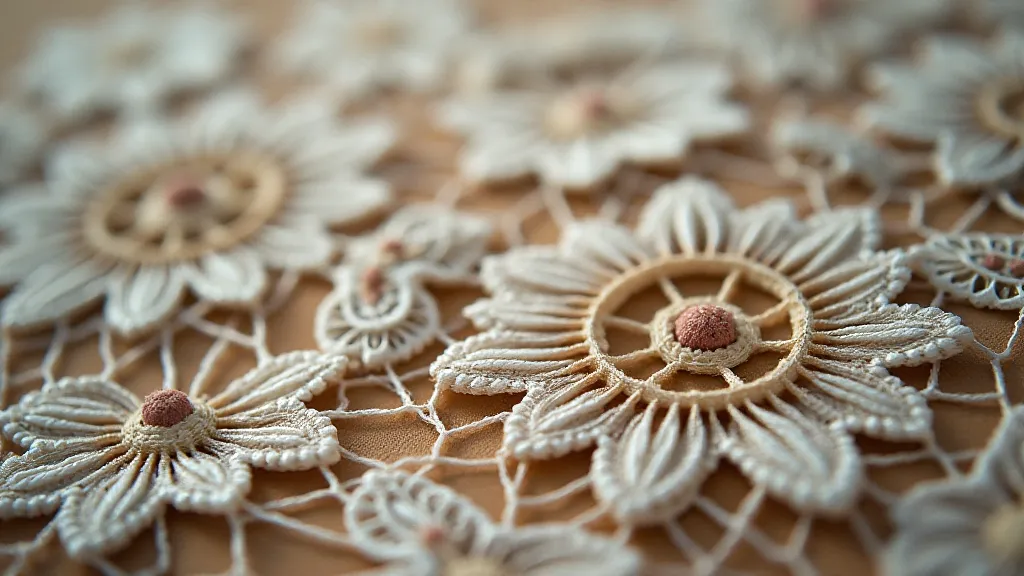
The Collector's Mindset: Beyond the Visual
Collecting antique bobbin lace isn’t just about possessing something beautiful. It’s an exercise in pattern recognition – not just within the lace itself, but within the fascinating and often volatile ecosystem of the antique market. The pursuit often begins with a superficial appeal, a simple attraction to the visual artistry. But a true collector quickly realizes that the value isn't solely determined by beauty. It's a complex equation incorporating provenance, rarity, condition, regional style, and, undeniably, the current whims of the market. And that’s where the psychology becomes truly fascinating.
We all bring biases to our collecting. I found myself initially gravitating towards the "perfect" pieces: flawlessly symmetrical, vibrant in color, and clearly stamped with identifiable maker's marks. The logic felt straightforward – the more perfect the piece, the higher its value. But experience – and a few costly mistakes – taught me a more nuanced perspective. The thrill of the hunt isn't just about acquiring the 'best' piece; it's about uncovering the *story* behind it. A slight imperfection, a repair from a long-ago restoration, a subtle variation in thread color – these aren't necessarily detractions; they're whispers of history, tangible evidence of the lace's journey through time. The types of imperfections are diverse, and learning to recognize common bobbin lace defects is a crucial skill for any serious collector. Often, these defects, far from diminishing value, add a layer of authenticity that simply cannot be replicated.
The Allure of Imperfection: Survival and Narrative
The most surprising revelation in my collecting journey has been the increasing appreciation for what I once considered ‘damaged’ lace. A missing section, a mend using a slightly different thread, a faint discoloration—these flaws often command a higher premium than seemingly pristine pieces. Why? Because they tell a story. A visible repair indicates that the lace was valued enough to be saved, offering a glimpse into the lives of those who cherished it. The discoloration, perhaps caused by exposure to sunlight or years of storage, adds a patina of age and authenticity.
Consider a piece of 19th-century Honiton lace, notorious for its intricate carriage trimming. If a section of that trimming is missing—a common occurrence given the fragility of the design—it doesn't necessarily diminish the lace's value. In fact, it might *increase* it. It tells a story of a garment or furnishing that was worn or used, passed down through generations, and ultimately salvaged from a life of service. The imperfection isn't a blemish; it's a testament to survival. This sense of preservation is beautifully encapsulated in the idea that these artifacts are fragments of a larger, lost narrative—akin to the palimpsest of time itself, as eloquently explored in The Gossamer Threads of Memory: Bobbin Lace and the Palimpsest of Time. The way these fragments speak to the passage of time, to the lives touched by these delicate creations, is a powerful and moving aspect of collecting.
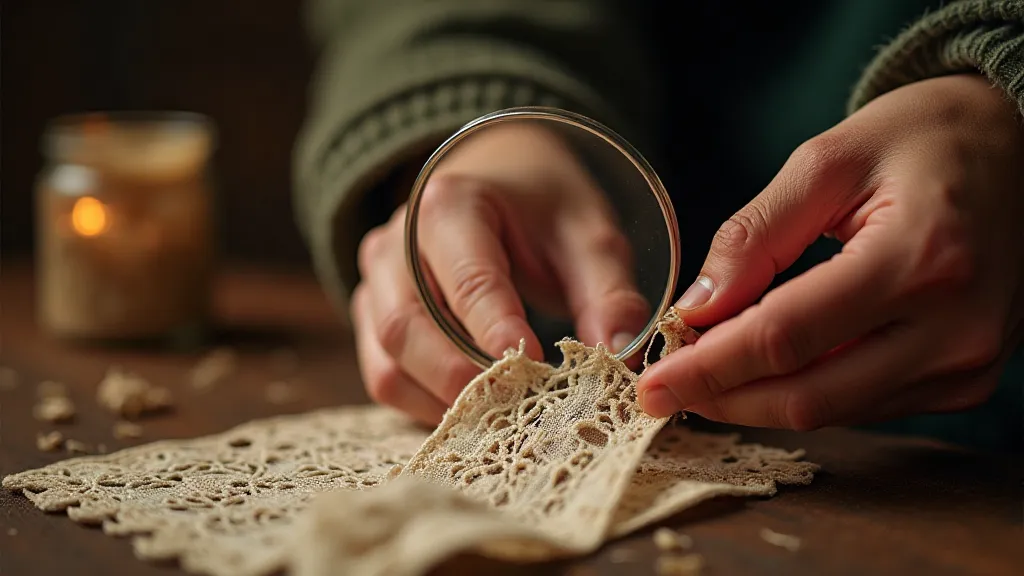
Market Fluctuations and the Illusion of Value
The antique market isn't a static entity. It ebbs and flows with trends, influenced by celebrity endorsements, museum exhibitions, and the fluctuating interests of collectors. What's considered highly desirable one year might be overlooked the next. A piece of lace that was once considered common might suddenly become sought-after due to a sudden surge in demand. This inherent volatility can warp our perception of value.
I recall the brief but intense fascination with Brussels lace a few years ago. Suddenly, pieces that had languished on auction blocks for years were fetching surprisingly high prices. It wasn't necessarily because the lace was inherently more beautiful or rare; it was simply because the market had decided that it was "in vogue." This taught me a valuable lesson: true value lies not in fleeting trends but in the intrinsic qualities of the object itself. Understanding these currents, learning to discern genuine appreciation from fleeting fancy, requires a collector to become as much an economist as an aesthete.
The Craftsmanship: A Legacy of Skill
Ultimately, my appreciation for antique bobbin lace has deepened my understanding of human skill and dedication. These weren't just pieces of fabric; they were the product of years of training, honed through generations of lacemakers. The intricate patterns, the precise tension, the subtle variations in texture – all were the result of an unparalleled mastery of a demanding craft. The legacy of these artisans continues to inspire, demonstrating the power of human creativity and perseverance.
Imagine a young girl in 18th-century Bruges, apprenticed to a master lacemaker. Day after day, she would practice the intricate techniques, slowly developing the muscle memory and the keen eye necessary to create these beautiful objects. Her skill wasn’t just about dexterity; it was about understanding the properties of the thread, the tension of the bobbins, and the interplay of light and shadow. The impact of this dedication is reflected in how collectors are increasingly incorporating these elements into their own aesthetic choices, finding inspiration in historical design. You're able to see the echoes of these techniques utilized to their fullest potential in contemporary applications, as explored further in Bobbin Lace in Home Decor: Curtains, Tablecloths, and More.
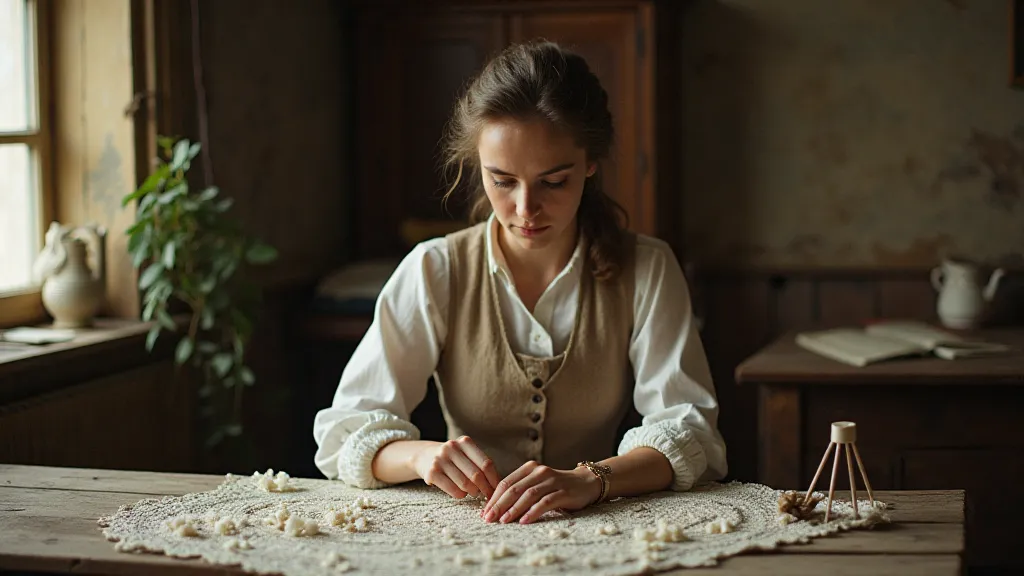
More Than Just a Collection
Collecting antique bobbin lace isn't just about acquiring beautiful objects. It’s an intellectual pursuit, a journey into history, and a celebration of human artistry. It's about appreciating the beauty of imperfection, recognizing the stories whispered through thread, and understanding the complex interplay of market forces and human desire. It's about discovering, through fractured symmetry and unexpected flaws, that true value lies not in perfection, but in the enduring power of craftsmanship and the resilience of the human spirit. The collection itself can become a living testament to these narratives, a tangible link to the artisans and their world. Each piece whispers its own story—a history woven into every thread, inviting us to unravel the mysteries of the past and appreciate the beauty of a legacy preserved through time.
Furthermore, understanding the cultural context surrounding bobbin lace production and usage enriches the collecting experience. The preservation of these delicate artifacts represents a commitment to safeguarding a vital part of our shared human heritage. It’s a recognition that even seemingly insignificant objects can hold profound historical and artistic significance, offering valuable insights into the lives and aspirations of those who came before us. A truly passionate collector is not just an acquirer of beautiful objects, but a steward of history, dedicated to sharing the stories and knowledge embedded within these intricate creations. The profound influence of tradition and history informs every aspect of the collecting experience, transforming it from a simple acquisition into a meaningful and enlightening pursuit.
Beyond the aesthetics and the historical context, the meticulous process of restoration, conservation, and documentation plays a critical role in preserving these treasures for future generations. A holistic approach, encompassing not only the acquisition but also the careful stewardship of these fragile artifacts, ensures their continued survival and allows us to connect with the past on a deeper level. The dedication to preserving these fragments of history underscores the collector’s commitment to safeguarding a tangible link to the artisans who created them, echoing the sentiment beautifully captured in The Gossamer Threads of Memory: Bobbin Lace and the Palimpsest of Time, which further explores the cyclical nature of preservation and remembrance.
